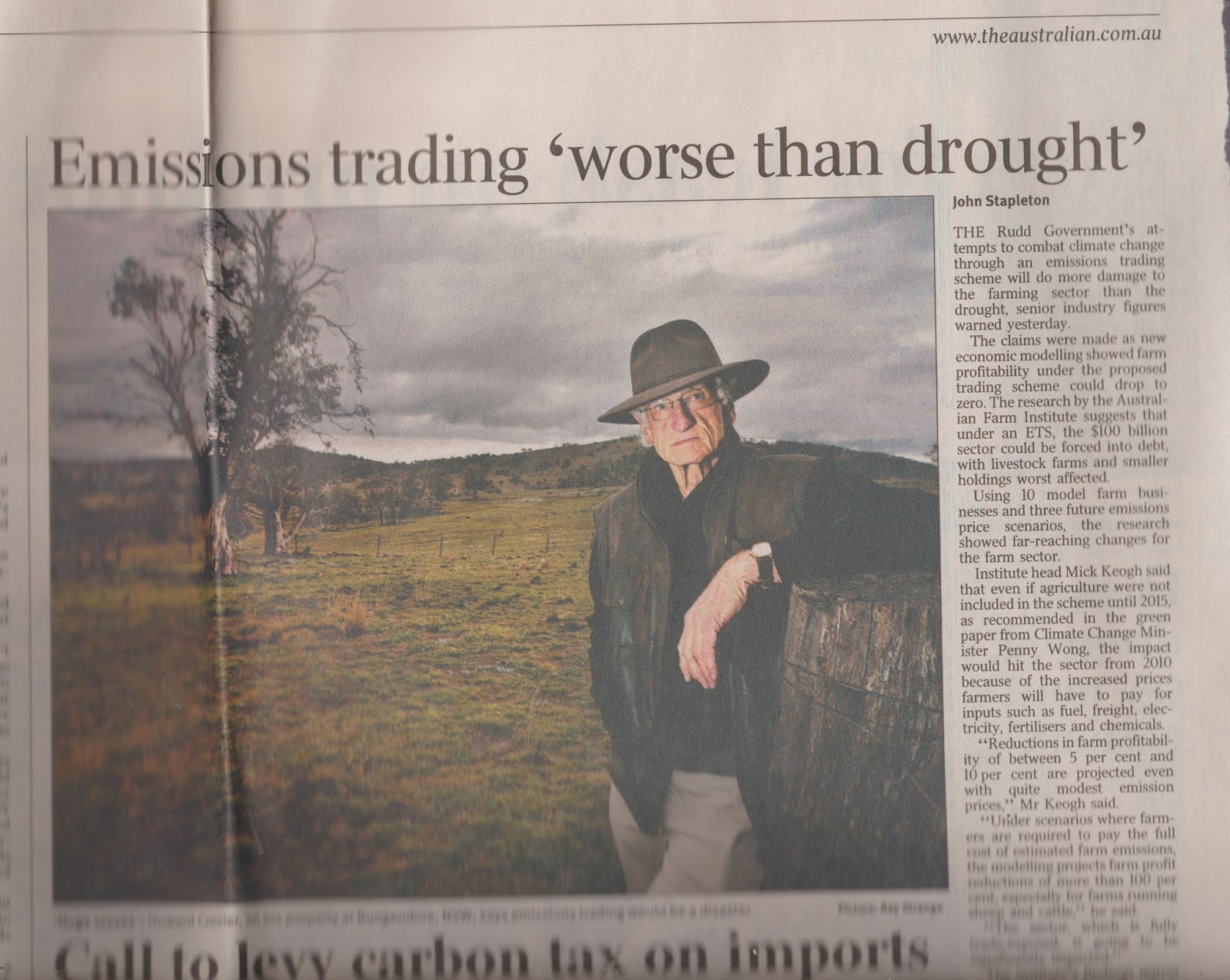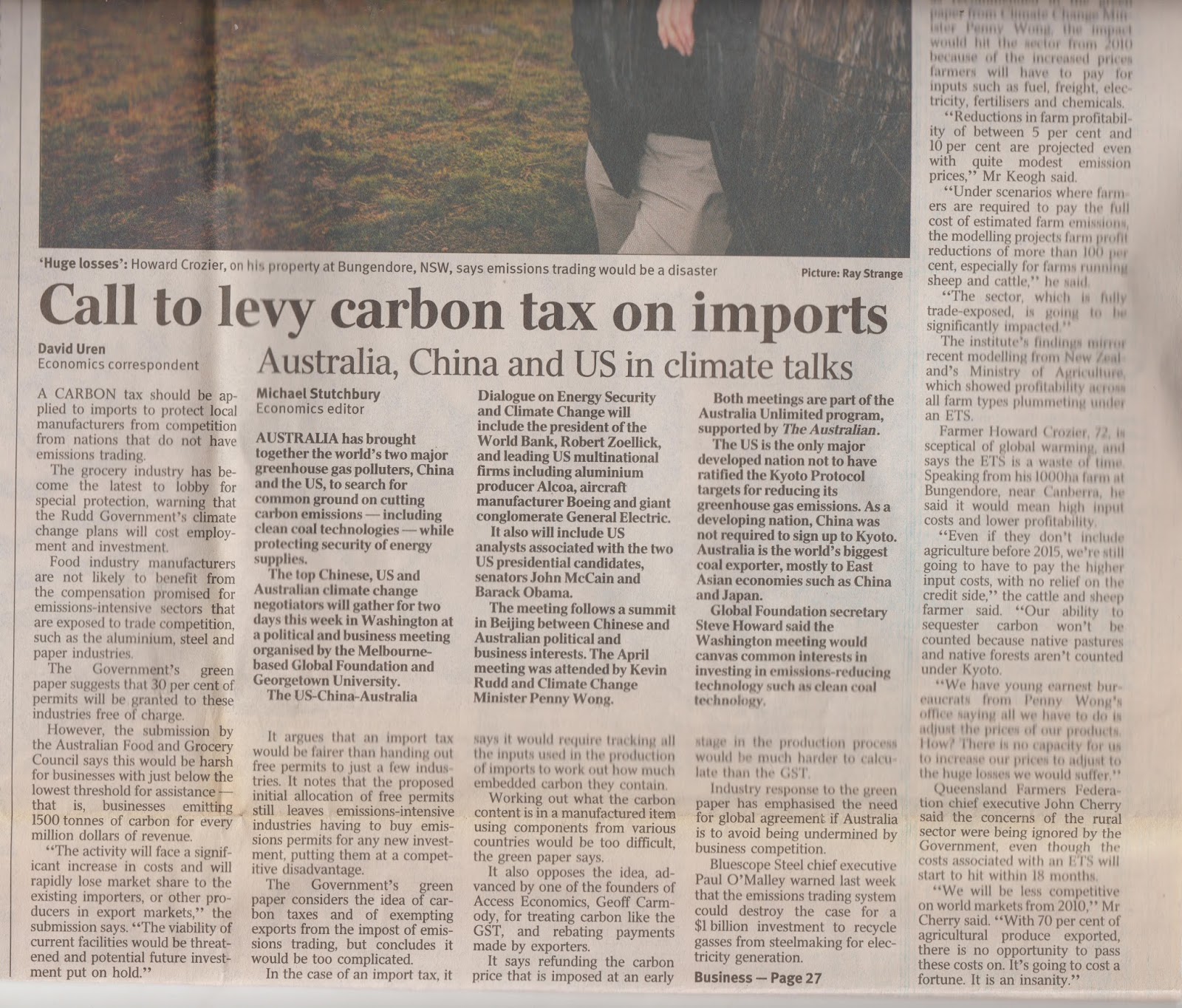Emissions trading `worse than drought’
Stapleton, John. The Australian [Canberra, A.C.T] 15 Sep 2008: 4.
Abstract
“Even if they don’t include agriculture before 2015, we’re still going to have to pay the higher input costs, with no relief on the credit side,” the cattle and sheep farmer said. “Our ability to sequester carbon won’t be counted because native pastures and native forests aren’t counted under Kyoto.
“We have young earnest bureaucrats from [Penny Wong]’s office saying all we have to do is adjust the prices of our products. How? There is no capacity for us to increase our prices to adjust to the huge losses we would suffer.”
“We will be less competitive on world markets from 2010,” Mr [John Cherry] said. “With 70 per cent of agricultural produce exported, there is no opportunity to pass these costs on. It’s going to cost a fortune. It is an insanity.”
Full Text
THE Rudd Government’s attempts to combat climate change through an emissions trading scheme will do more damage to the farming sector than the drought, senior industry figures warned yesterday.
The claims were made as new economic modelling showed farm profitability under the proposed trading scheme could drop to zero. The research by the Australian Farm Institute suggests that under an ETS, the $100 billion sector could be forced into debt, with livestock farms and smaller holdings worst affected.
Using 10 model farm businesses and three future emissions price scenarios, the research showed far-reaching changes for the farm sector.
Institute head Mick Keogh said that even if agriculture were not included in the scheme until 2015, as recommended in the green paper from Climate Change Minister Penny Wong, the impact would hit the sector from 2010 because of the increased prices farmers will have to pay for inputs such as fuel, freight, electricity, fertilisers and chemicals.
“Reductions in farm profitability of between 5 per cent and 10per cent are projected even with quite modest emission prices,” Mr Keogh said.
“Under scenarios where farmers are required to pay the full cost of estimated farm emissions, the modelling projects farm profit reductions of more than 100 per cent, especially for farms running sheep and cattle,” he said.
“The sector, which is fully trade-exposed, is going to be significantly impacted.”
The institute’s findings mirror recent modelling from New Zealand’s Ministry of Agriculture, which showed profitability across all farm types plummeting under an ETS.
Farmer Howard Crozier, 72, is sceptical of global warming, and says the ETS is a waste of time. Speaking from his 1000ha farm at Bungendore, near Canberra, he said it would mean high input costs and lower profitability.
“Even if they don’t include agriculture before 2015, we’re still going to have to pay the higher input costs, with no relief on the credit side,” the cattle and sheep farmer said. “Our ability to sequester carbon won’t be counted because native pastures and native forests aren’t counted under Kyoto.
“We have young earnest bureaucrats from Penny Wong’s office saying all we have to do is adjust the prices of our products. How? There is no capacity for us to increase our prices to adjust to the huge losses we would suffer.”
Queensland Farmers Federation chief executive John Cherry said the concerns of the rural sector were being ignored by the Government, even though the costs associated with an ETS will start to hit within 18 months.
“We will be less competitive on world markets from 2010,” Mr Cherry said. “With 70 per cent of agricultural produce exported, there is no opportunity to pass these costs on. It’s going to cost a fortune. It is an insanity.”
Credit: John Stapleton

